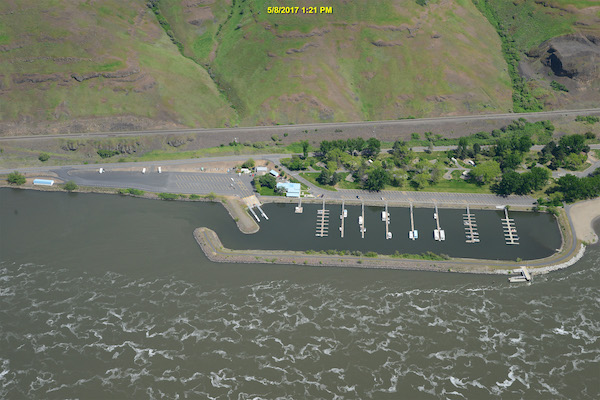
Pikeminnow Season Catch Up; Data Confirms Snake Walleye Increase
A sharp increase in incidental walleye catches during this year’s Northern Pikeminnow Sport-Reward Program season is confirming a report of building numbers of the fish colonizing upper portions of Washington’s Snake River.
End-of-season tallies show 12 times as many walleye were reported in 2022 versus 2021 at the Boyer Park catch station immediately below Lower Granite Dam near Pullman. It follows on an Idaho Department of Fish and Game blog last month that stated more and more are passing upstream through the dam’s fish ladder each year.

Besides just a function of a growing walleye population, it wasn’t immediately clear why the catch appears to be booming at Boyer Park. While the long-running bounty program pays anglers for catching and turning in 9-plus-inch native pikeminnow, it only counts how many nonnative walleye, smallmouth bass, catfish/bullheads and yellow perch they catch.
WDFW Regional Fish Manager Chris Donley in Spokane says that when a rising walleye catch is seen, it’s typically driven by a big year-class or two reaching harvestable size.
He can’t say for sure that that’s the case on the Snake River, however, as walleye abundance isn’t sampled there like it is in some Eastern Washington reservoirs where the game fish provide a popular managed fishery.
“We struggle to sample because any work we do ‘harms/takes’ ESA-listed salmon and steelhead,” Donley says. “Getting a permit from NOAA is difficult and would require we take some of our permitted impacts from other fisheries or research efforts ongoing in the basin.”
But he anticipates WDFW will “start digging in on this more now that we are starting to see them show up consistently in that portion of the river.”
Data from pikeminnow program managers shows 24 walleye brought in to Boyer Park in 2018 – the first year that they broke out incidental game fish catch data by station – 25 in 2019, 56 in 2020, 96 last year and 1,152 this year.
Roughly 68 percent of 2022’s walleye were caught in August and September, 32 percent in May, June and July.
“Who knows, maybe pikeminnow anglers are more enlightened about salmon and steelhead conservation,” Donley speculates. “We’ve been consistent in our message [that walleye are bad for salmon and steelhead], so maybe someone is listening.”
The concern is the potential for increased Chinook, coho, sockeye, and A- and B-run summer smolt predation spreading further up the system. IDFG reported that an average walleye will eat 2.5 smolts a day in spring as young Chinook, coho, steelhead and sockeye move downstream to the Pacific.
In that IDFG blog, a fisheries tech estimated that 2020 saw 160 walleye swim through the Lower Granite Dam fish ladder, 2021 saw 294 and this year “is shaping up to be the largest yet.”

The pikeminnow removal program is geared to reducing smolt predation and operates on the Lower and Mid-Columbia as well as Snake River up to Clarkston.
This year’s data shows that Boyer Park also saw 2022’s highest pikeminnow catch, 21,856 fish, and the second highest effort, 1,457. Effort was actually down there in 2022 by 387 from the previous year, but catch was up by 4,774 fish.
Overall, the program saw 140,062 reward-qualifying pikeminnow brought in to in 2022, an increase over 2021’s 89,537 – the lowest on record – though below the long-term average since 1991, when the project began.
Effort was also down this year, to 10,557 from 11,543 in 2021, and was the lowest on record.
This year’s top fisherman brought in 6,858 pikeminnow and earned $69,030 – the highest single-season paycheck since 2018. The second-place angler scored $63,730 for their 6,328 fish. Five others made from $40.500 to $51,500.
Pikeminnow program funding comes from the Bonneville Power Administration. Federal dams on the Columbia and Snake Rivers enhanced the ability of pikeminnow to prey on young salmonids migrating down through the hydropower system’s still waters.
Full disclosure, the program is a Northwest Sportsman advertiser.
The point isn’t to eradicate pikeminnow, program manager Eric Winther told our MD Johnson for a May feature. “We’re trying to crop them down by targeting 10 to 20 percent of the fish population 9 inches long and larger. Again, they’re a native fish, and they do have a purpose.”
That reduction goal has been met in all seasons since 1991 and likely will again this year, but to try and ensure that, reward payments were increased in 2022 to $6 each for the first 25, $8 each for fish 26-200, and $10 for every one above that. Specially tagged pikeminnow can also be redeemed for $500.

